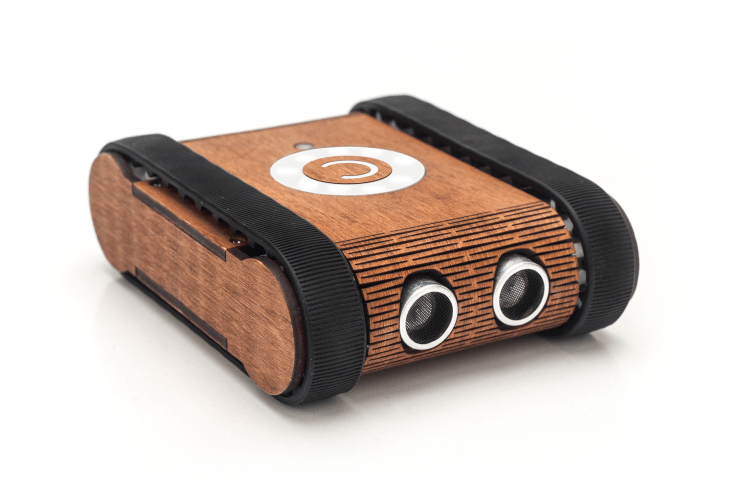Codie is a fast, rolling robot toy that teaches kids programming concepts
- Ngoc Huynh

Codie Labs
A robotics company that teaches kids how to code, Codie Labs, took the stage at TechCrunch Disrupt London this afternoon to show off their fast, rolling and programmable robot, Codie, which is controlled via a mobile application for iOS or Android. The Budapest-based startup earned the opportunity to present on the big stage by winning the Wild Card position, which pulls a promising company out of Disrupt’s Startup Alley.
The Wild Card is chosen based on a combination of audience voting and editorial feedback.
Founded in February 2013 by serial entrepreneur András Holló and a friend he met in university, Ádám Lipécz, the idea with Codie Labs is to give children ages 6 through 15 a simple introduction to programming concepts through an easy-to-use app interface involving colorful drag-and-drop blocks that represent various actions you can take with the robot.
The robot itself has a wooden exterior, two treads that allow to easily traverse flat surfaces (and some less-than-flat ones), and custom internals that include proximity sensors, a microphone and line readers that can “see” any graphical markings on the ground. An LED light on the top of the robot can also be customized to display different colors, using the mobile application.
Coide, as the robot is called, gets around pretty quickly. He’s as fast as a little race car, and can be controlled either through the programs a child writes in the app or through a manual interface that includes an on-screen joystick that you can use to direct his movements.
To write a program, kids drag blocks onto the app’s screen to dictate actions like “move,” “turn,” “decide,” “wait,” “sound,” and more. The blocks are connected with arrows, and, when tapped, kids can also customize the actions themselves in more detail to do things like adjust the speed, distance, color, brightness and much more.
In addition, the programming language teaches larger coding concepts like “if, then, else…” decisions, or looping, for example.
When you have completed a program, you can give it a name and save it for future use.
